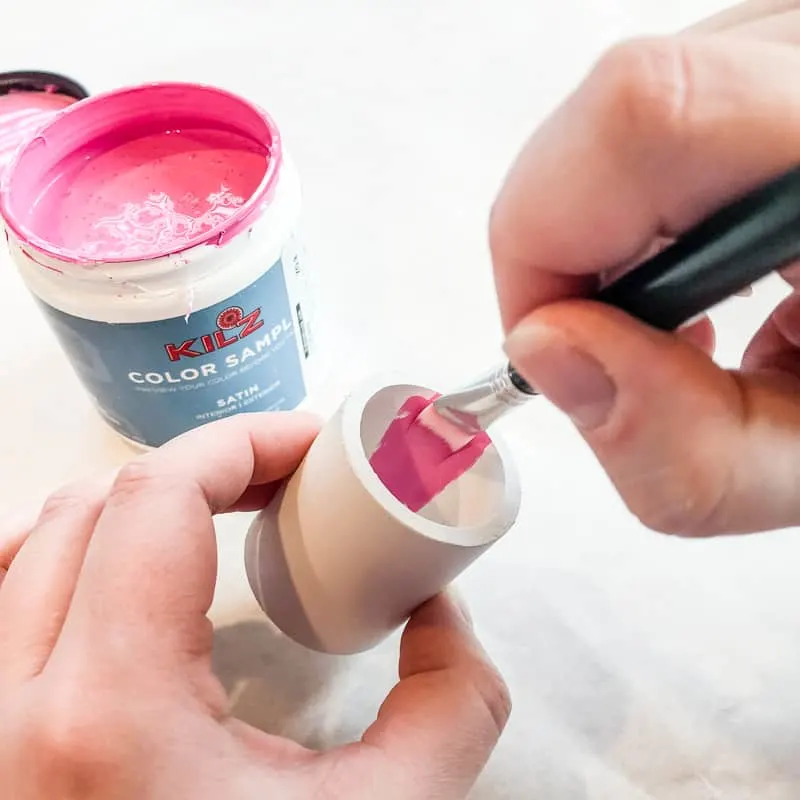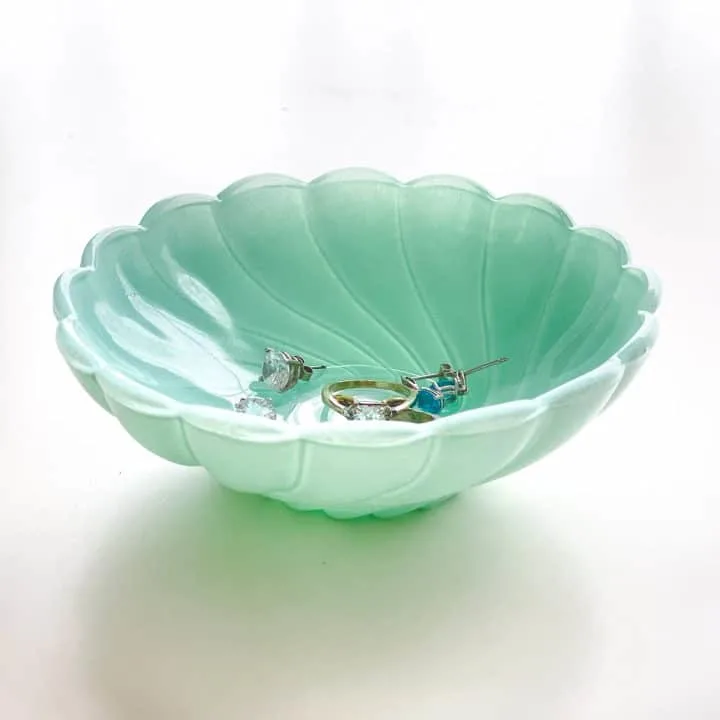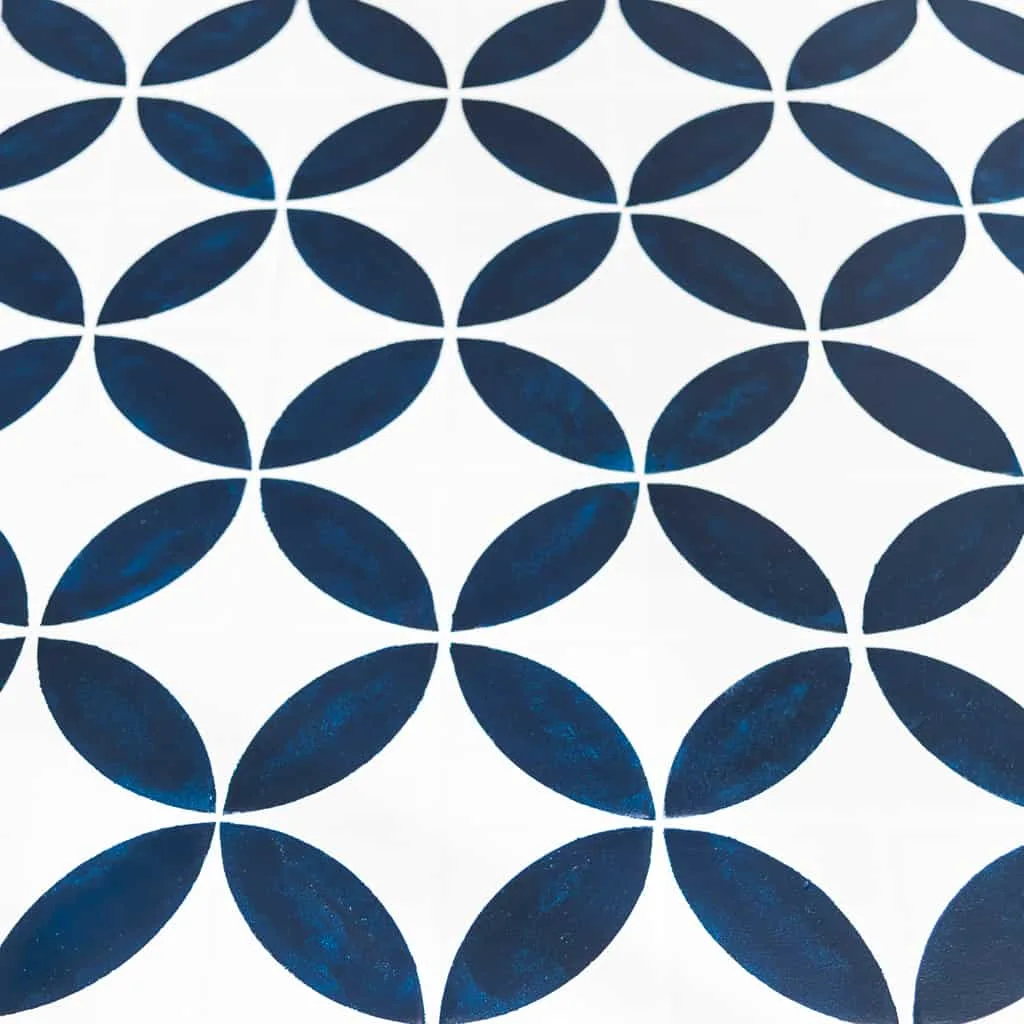Are you wondering how to paint PVC? In this guide, we'll go over all the tips, tricks, and techniques for painting PVC pipe and trim!

Painting PVC starts with good preparation. First, you'll need to sand the surface to remove the sheen and give the surface some texture. Then, many people use acetone to further clean and prepare the PVC for paint that is formulated for plastic.
Sounds simple, right? Keep reading to learn all my tips and tricks for a PVC paint finish that lasts!
This post contains affiliate links for your convenience. Purchases made through these links may earn me a small commission at no additional cost to you. Please visit my disclosures page for more information.
Is it Possible to Paint PVC?
There have been rumors that painting PVC isn't possible (or that it's a futile effort). However, these claims only exist because many people have used the wrong approach. It's absolutely possible to paint PVC, and I'll show you how!
When to Paint PVC
Polyvinyl chloride is a common plastic-like material used in multiple building applications. You're probably most familiar with it in the form of large white pipes used for plumbing and draining. Indeed, this is probably the most common use for PVC.

With that said, PVC has caught on for use in other building projects. In many of these cases, you'll want to hide that bright white pipe under a coat of paint. Here are just a few PVC materials that are frequently painted.
PVC Pipes
You can use PVC pipe for various DIY projects as well as for plumbing. You might wonder: why would I want to paint it?
Sometimes, whether in a basement, open ceiling, or outdoors, a section of PVC pipe is exposed. Using some paint can make the PVC pipe look less out of place and help it blend into the environment (or turn it into a feature!)

If you're using the pipe for a DIY project, such as this Nerf blaster rack, you may want to make it less obvious that it uses plumbing materials. A quick coat of paint in a fun color can totally change the look!

PVC Trim
PVC has become a common choice for indoor and outdoor trim. One of the biggest advantages of PVC trim over wood or MDF is that PVC doesn't rot, warp, or get soggy. It's frequently used for window frames, which are molded to hold the glass securely.

Factories can form PVC into a wide variety of shapes and decorative profiles, and it has some flex to it, helping it fit into small or awkward areas. Many people choose to paint it so it blends in with the rest of the house.
You can even find fencing and deck railing materials made of PVC! If you dread painting or staining your deck every few years, this is a great option!
PVC Sheets
PVC also comes in boards or sheets, which can be used for projects that require water resistance. Others use these PVC boards while building around windows or under the eaves of a roof to prevent rot.
You can also find decorative panels made of PVC. They come in a variety of different styles and patterns, and can look really cool when painted! I used four PVC panels to create this modern planter box, and painted it all bright yellow for a fun pop of color.

How to Paint PVC: Materials Needed
Having the right materials can make or break any project. The same is true when you paint PVC pipe or trim. If you don't have the right supplies, it probably won't turn out as you anticipated!
You probably already have many of the supplies you'll need to get started on hand, so you'll only have to make a quick trip to the store.
- Chemical resistant gloves for protection from acetone
- 220 grit sandpaper
- 80 grit sandpaper
- Acetone
- Paint formulated for plastics (often found as spray paint)
- Small brushes for edges
- Drop cloth to catch spills
Tips for Painting PVC
This section will outline the steps to paint PVC pipe, PVC fittings, PVC panels, and trim. As you'll see, it's not much different from painting anything else. But a few nuances are the key to achieving a strong finish.
Staying Safe When Painting PVC
Safety is always the number one priority during any project. There are a few things to be careful of when painting PVC.
First, wear a mask when painting or sanding. You don't want to inhale PVC particles from sanding, or spray paint fumes.
Second, acetone is pretty strong stuff, and can irritate the skin and the eyes. Wear chemical resistant gloves that are made to protect from acetone. Regular latex gloves can dissolve when exposed to acetone!
Sand the PVC Surface
You can sand PVC several ways. First, use 220 grit sandpaper to clean the ragged cut edges and rough up the surface.

Next, use 80 grit sandpaper (after the 220 grit). This will give the PVC deeper grooves and may help the paint adhere better. Some people also use this method to make the PVC surface look like wood grain!
If you skip sanding, you'll find the paint beads and rolls off the surface, or easily scrapes off.
Use Acetone to Clean PVC
Before you start painting, it's crucial that you clean the surface with acetone. What does this stuff do?
First, it cleans off all residue - including labels and logos. Second, the acetone actually etches into the PVC, causing it to swell and open up the pores. This swelling diminishes the smoothness of the surface, making it more receptive to paint.

Some people skip the sanding and go straight to this step. Douse a rag with acetone, wipe it onto the surface, and allow it to dry. Make sure to wear chemical resistant gloves!
Apply Paint to PVC
Check the label on your paint to make sure that it's formulated for plastic. This will ensure that it bonds correctly to the surface. You may want to test on a scrap piece to make sure the paint will stick.

If you're spray painting a stationary object (like a pipe coming from the wall), it's wise to place some type of drop cloth to catch any drips, and mask off the rest of the area with paper and tape.
Keep the spray can moving and give the entire surface a thin coat of paint. Don't spray on too much, or you'll get unsightly drips. Check out my guide on how to spray paint like a pro for more tips!
If you're brush painting, build up multiple thin layers. Try to prevent overlapping brush strokes, and don't fuss with the paint once it's been applied.

Frequently Asked Questions
Can you paint black plumbing plastic tubes?
Yes, you can paint black plumbing plastic tubes any color you want! You'll need to prepare the surface by sanding or wiping it down with acetone first. I recommend applying an oil based primer before painting to cover up some of the black plastic. Then use spray paint or oil based paint that is specially formulated for plastics to change your pipes to any color you want!
Do you need to prime PVC before painting?
If you sanded well and used acetone, you don't typically need any primer. Unlike wood or MDF, PVC is a stable and less absorbent surface, so primer won't have the same benefits. However, primer might provide additional protection in some situations.
What's the best paint for PVC?
The best paint for PVC is made specifically for plastic surfaces. Many people like using Krylon fusion paints for plastic. These types of paint will leave the best finish and are the least likely to chip and peel.
What DIY projects can I make with PVC?
Are you searching for some cool PVC projects? When you put on your creative cap, you can find a lot of interesting uses for this durable product!
For instance, check out my tutorial on how to create a PVC pipe heart. You can use this same method to create almost any shape, and the end result looks really cool!

Many people use PVC to make children's forts, marshmallow launchers, and much more. Once you know how to paint this versatile material, you'll see the world through a new (PVC) lens!
Check out these other painting tutorials!








Kristi Elliott
Tuesday 26th of July 2022
If I follow these steps will it be semi durable? I need to paint PVC for stage props that will be set up and taken down a lot and transported in a trailer and I’d like to avoid trying to touch up paint in Iowa winters.
Vineta Jackson
Monday 1st of August 2022
You might want to apply a protective top coat over the paint, just in case. Usually PVC isn't handled much, so the paint doesn't need to be super durable. It just needs to stick!
Marlene Steger
Sunday 22nd of May 2022
Do you have any suggestions for putting mosaic tiles on PVC ? Not sure what kind of adhesive to use to adhere the tiles!
Vineta Jackson
Monday 23rd of May 2022
You might want to try a PVC adhesive like this. I would test it with a few tiles before starting a big project.